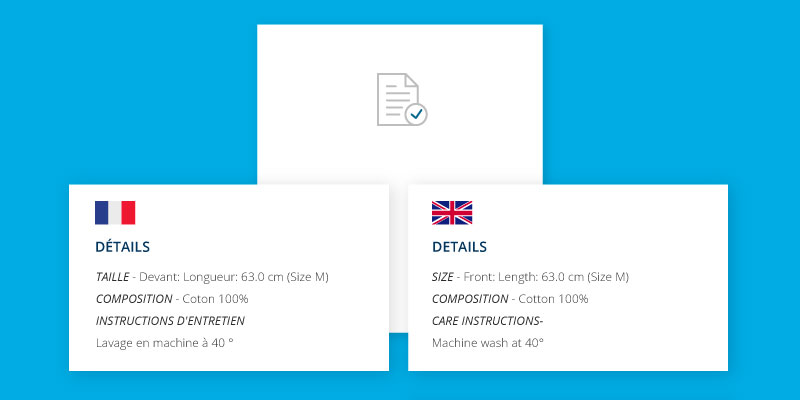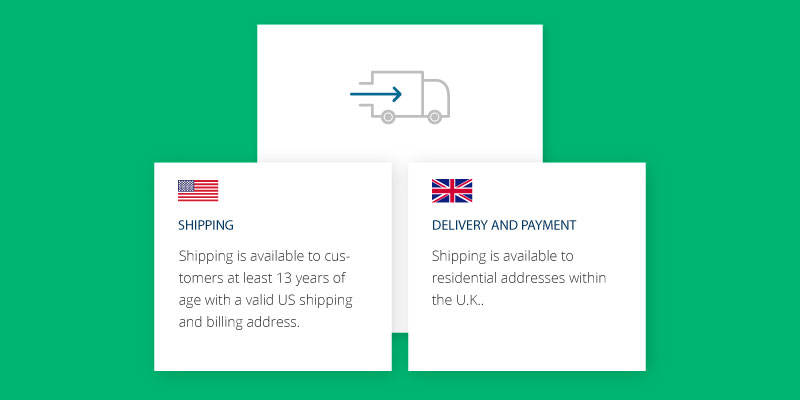A Beginner’s Checklist for eCommerce Localisation
eCommerce is growing. Along with eCommerce, the need for a more personalised experience is growing at an unprecedented rate. In this blog post, we cover the basics of eCommerce localisation. You will learn concepts, definitions and most importantly, why eCommerce localisation is crucial for any eCommerce business. Ready? Let’s dive right in!
What is Localisation?
First things first. To talk about eCommerce localisation, we need a clear and concise definition of the term. According to BigCommerce:
“Localisation is a segment of personalisation, and all personalisation aims at bettering the customer experience.”
As we can understand, localisation is an integral part of personalisation. Unfortunately, the truth is that most individuals and businesses get localisation wrong. This happens because they believe that localisation is just the translation of the most visited pages of a website or the use of different currencies. What localisation achieves, is that it creates a personalised experience for the visitor, by the use of elements that are familiar to them. Such elements might be the website’s language, currency, shipping information, product descriptions and more.
Websites often detect the location of a customer with the help of the IP address of the computer they use to access the site. This can provide customers with a highly personalised experience by altering the content of the website they are browsing to. This way, eCommerce businesses can approach their potential customers in a different – and more meaningful – way. Localisation nowadays is not optional. It’s essential for businesses across different industries.
If we had to define the relationship between localisation and translation, we would say that translation is a part of localisation. Put simply, translation is the process of translating words or text from one language into another. On the other hand, with localisation, an online store not only has to change its language but also adopt a whole new culture. With localisation, eCommerce businesses can get a step closer to their visitors, by showing them things that are relevant to them.
Localisation is a company’s effort to talk to its audience in a way that is easily understandable and acceptable by them. This cultural fit can and will give your eCommerce business a competitive advantage and will help you earn more by offering a superior customer experience. All in all, localisation is what draws the line between machine and human translation.
The Most Important Localisation Elements
Here are the most important elements you should consider as you start to localise your website:
1. Currency
It is understood that when you sell to a certain country, you need to sell products in that country’s currency. Keep in mind that this is not important only for comfort reasons; people want to think that buying from you is easy and giving them the chance to buy products in their currency is a way of making the whole procedure much easier.

The cotton t-shirt in the image above is sold both in France and the US in their respective national currencies. However, it is not enough to merely change the currency symbol for the product. The format, language, and visual representation must also be localized appropriately. For example, commas are used in place of decimals in French, as can be seen in the image above.
2. Banners and Graphics
As in the example we mentioned earlier, using different banners and graphics for different audiences could help your store perform better. You may be worried about costs, but with a free tool like Canva, you can design different banners in different colours and designs, using some of Canva’s made-for-you templates. This way, you can streamline the process of creating different banners for different target markets.
3. Time
It is important that you localise the time on your website or at least mention your time zone so that people know when your customer service is available. What you can do, is mention your target market’s time related to your time zone, so that visitors don’t have to leave your website to convert the time in a time zone converter. This way, you will keep them engaged, and you will increase the average duration of your sessions.
4. Taxes
As you already know, tax rates vary by country. Thus, it is highly recommended that you include a small section with all the different taxes for all the countries you are selling to. You can add this to the ‘shipping’ section and ensure that your website visitors get all the information they need.
5. Language
Language is a critical factor in any website’s success. Especially for eCommerce businesses that ship worldwide, translating the website’s content into different languages gives your visitors the chance to read and understand in their language.

6. Product Descriptions
Like every other localisation element, you need to localise your product descriptions, so that your target audience understands them. This means that you use culturally appropriate specifications such as the local currency, unit of measurement, and even vocabulary.
7. Contact Numbers
This one is simple. If you have a hotline or customer support telephone numbers on your website, you just have to add the country code, so that people who want to call you, know exactly what they have to dial to reach you. Again, you don’t want to make people leave your website and start looking for your country’s code; you want to provide them with all the necessary information they need, to keep browsing to your website.
8. Product Reviews
This is one of the most understated – but at the same time one of the most important localisation elements. When you sell to a new country, always include product reviews and testimonials from people that live in that country and have a common name. For example, let’s assume that you are selling to Greece and have 15-20 positive product reviews that come from Greek customers. Take the best 3-4 with the most common Greek names and use them on your website. It makes a huge difference!
9. Shipping Information
Last but certainly not least, you should include all the necessary shipping information for all the countries you are shipping to. Online audio gear store Thomann does that as soon as you land on their website. By choosing the country you are shopping from, the whole website (shipping information included) changes. This offers a unique experience for each of the visitors that browse the website and look for products to buy.

In the image above, the US site is more stringent than the UK site in terms of who they deliver to. Although both the countries are English speaking and there is no need for language translation, regional considerations such as the one mentioned in the image, ensure that eCommerce websites comply with the local culture and law.
10. Special Offers and Promotions
People in different countries celebrate different holidays. This is why you should take these holidays under serious consideration and try to use them to your benefit. You should localise your special offers and promotions not based on your overall marketing strategy, but based on what people in the country you are selling to celebrate each time of the year. Try to show that what is important to them, is also important to you and your business.
Conclusion
Localisation is essential for any eCommerce business that ships worldwide. Depending on the type of your eCommerce business, you may have to make several changes before your website is localised for your visitors. But, how do you get started?
Try our eCommerce Localisation Services and unleash the great potential that localisation and translation have to offer. Above all, remember: People want to read in their language. It’s a universal human trait that will never change. Start using it to your benefit, and results will come.


